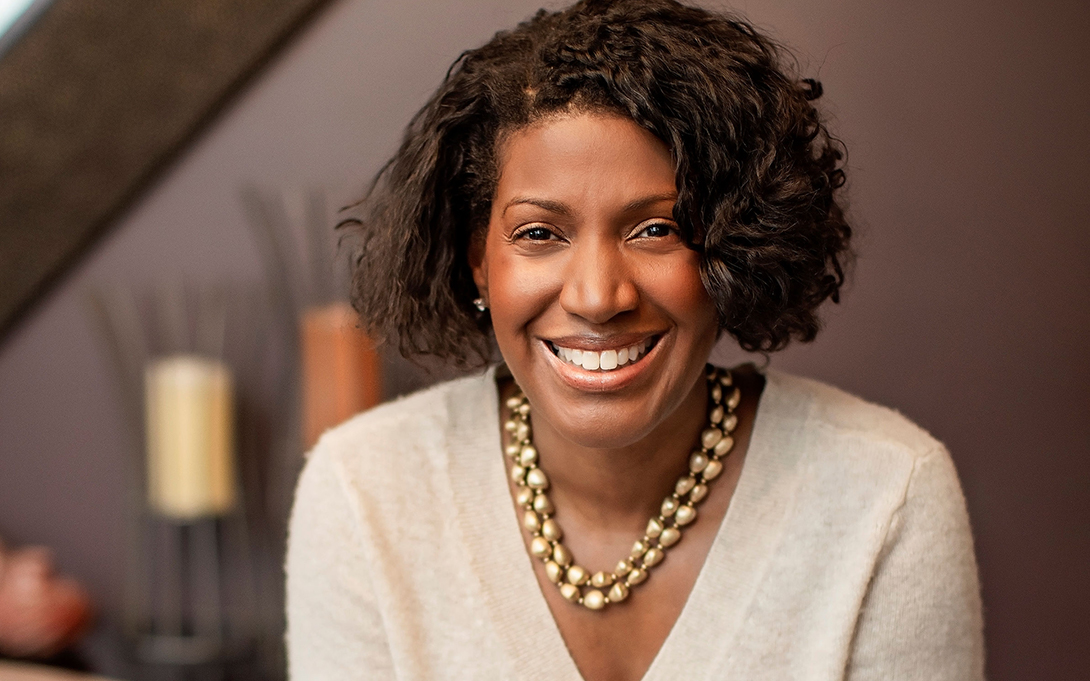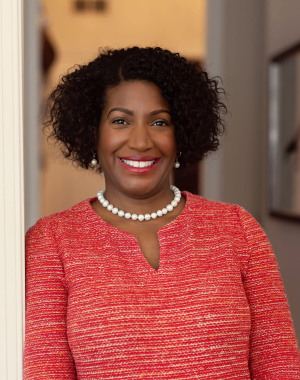
Read Celeste Watkins-Hayes' op-ed in the Detroit Free Press below. In winter 2021, Watkins-Hayes will teach a graduate course, PubPol 750: Interview Methods, and an undergraduate course, SOC 295: Pandemics: Social Dimensions of HIV and COVID-19.
COVID-19 vaccines are available in Michigan, and the state has announced a plan to prioritize which groups have early access. We need a strategic approach to immunization that ensures the COVID-19 vaccine will be accessible, deemed trustworthy, and utilized by Black and Brown communities, low-income populations and other socially disadvantaged groups. Due to underlying conditions like lack of access to healthcare and job-related exposure to the virus, Black and Latinx communities in the U.S. have experienced COVID-19 death rates 2.8 times the death rate of white people. The challenge is clear: without a robust immunization strategy to reach those populations, we could witness an even starker COVID-19 divide, with one segment of the population still grappling with COVID-19 years after the advent of life-saving drugs.
The University of Michigan’s Detroit Metro Area Communities Study found 61% of Detroiters said in October they are unlikely to get a government-approved COVID-19 vaccine when it becomes available. Black residents were four times as likely as white residents to say they are very unlikely to get the vaccine. Hispanic residents were twice as likely as white residents to say the same. Nationally, we see similar wariness of the COVID-19 vaccine among Black adults especially, with 58% saying in November they are less inclined to get vaccinated, according to the latest Pew Research survey. Further, people with higher family incomes, adjusted for cost of living and household size, are more likely than those with middle or lower incomes to say they would get immunized. These racial and class differences are disconcerting and yet completely understandable and unsurprising given the ways in which the health care system and government have systematically and historically underserved and mistreated poor people and people of color. The implementation challenges that we’ve already seen with vaccine rollout are likely to undermine confidence as well.
These issues must be addressed if we have any hope for a successful national vaccination rollout. Fortunately, a perhaps unexpected source provides us with a roadmap. The HIV community — health care providers, social service workers, activists, health advocates, policy officials, researchers and people living with HIV who provide trusted peer support to others — has spent the last 40 years honing a holistic approach to public health that takes seriously the inequities that drive epidemics. By shoring up and expanding the HIV safety net, we have the opportunity to fight two of the most impactful infectious diseases of the present day by targeting the health disparities that drive both.
The HIV safety net consists of policies, programs and people contributing to the U.S. HIV/AIDS response, with its centerpiece being the Ryan White CARE Act, which funnels federal resources to states and local communities to fight HIV. There are four key functions of the HIV safety net. First, it facilitates access to health care, including mental health services and medications to people living with HIV and those most at risk of acquiring the disease. Second, the HIV community recognizes the relationship between health care and economic assistance, understanding that meeting basic needs like housing and food are forms of health care. Next, the HIV safety net provides social support such as peer-led services, case management and support groups to help individuals address the underlying challenges and traumas that undermine health outcomes. And finally, the HIV safety net creates a path to civic engagement for populations of focus. The HIV community recognizes that engaging populations in leadership training and job opportunities helps people build skills and seize opportunities for social and economic mobility.
This wraparound service model has proved to be one of the most effective ways to respond to health crises. Low-income people living with HIV are more likely to achieve undetectable levels of HIV in the blood if they receive care at a Ryan White-funded facility that provides wraparound services. In my study of 84 women of diverse backgrounds living with HIV, the HIV safety net helped many achieve health, social and economic stability and inspired some to become change agents in their communities. Part of the “special sauce” of HIV public health work is the peer-led model of HIV engagement. I interviewed one woman who went for years knowing that she was living with HIV but never got on treatment. Messages from her doctor, the news and other sources could not convince her. What made her finally adopt public health recommendations to start HIV treatment? Another woman living with HIV shared her story and convinced her that the medications were safe.
The HIV community has clearly demonstrated that approaches that couple trusted communication, health care and social services and pharmaceutical tools have the best chance of successfully lowering illness incidence rates.
We can take a similar approach to COVID-19 and incorporate several cultural elements from the HIV safety net. First, we need to create strong linkages between communities and government to shape resource allocation and the coordinated epidemic response. Community members can serve as trusted messengers, engaged outreach workers and valuable problem solvers.
Second, we must value the importance of storytelling. Having people with HIV tell their stories has been critical for sharing public health information, educating the public and building policy consensus. Confidence in the COVID-19 vaccine is likely to grow in the coming months as people see others they trust receiving the vaccine and hearing their stories.
Next, we must leverage a trauma-informed approach to care. Attention to various experiences of trauma experienced by underserved populations should inform the healthcare approach. Those who have been abused by systems, institutions or other people are less likely to have the resources to engage the health care system and trust the vaccination process.
Finally, we can train HIV counselors who offer testing services and treatment referrals to be COVID-19 counselors. These individuals are already trained to have confidential, supportive and trauma-informed care conversations with individuals about their risk profiles, prevention strategies and treatment options.
We can engage the existing HIV safety net in these efforts and expand it to pivot toward the fight against COVID-19, bringing its tools, networks and experiential knowledge to bear in some of our most vulnerable communities.
